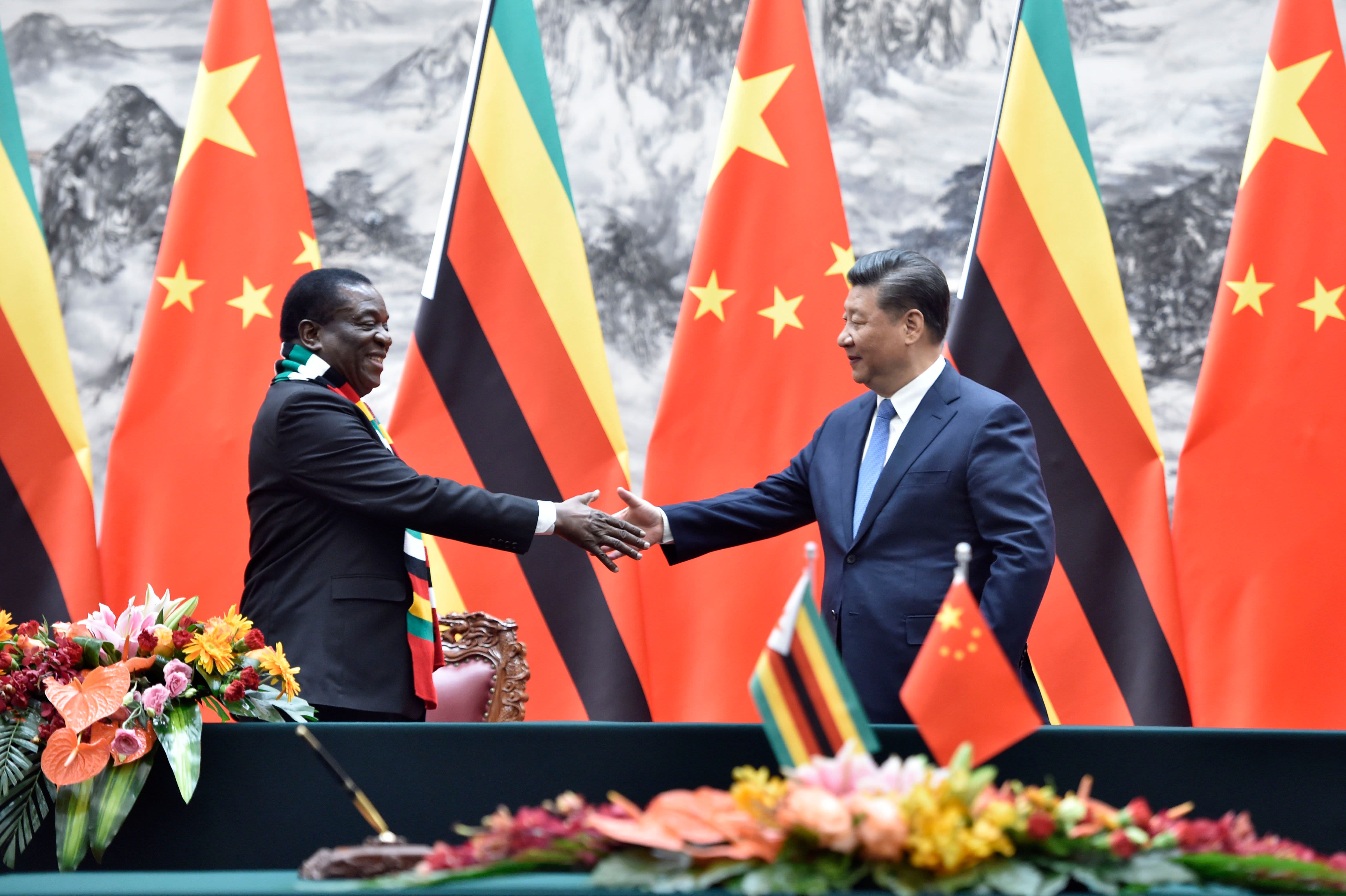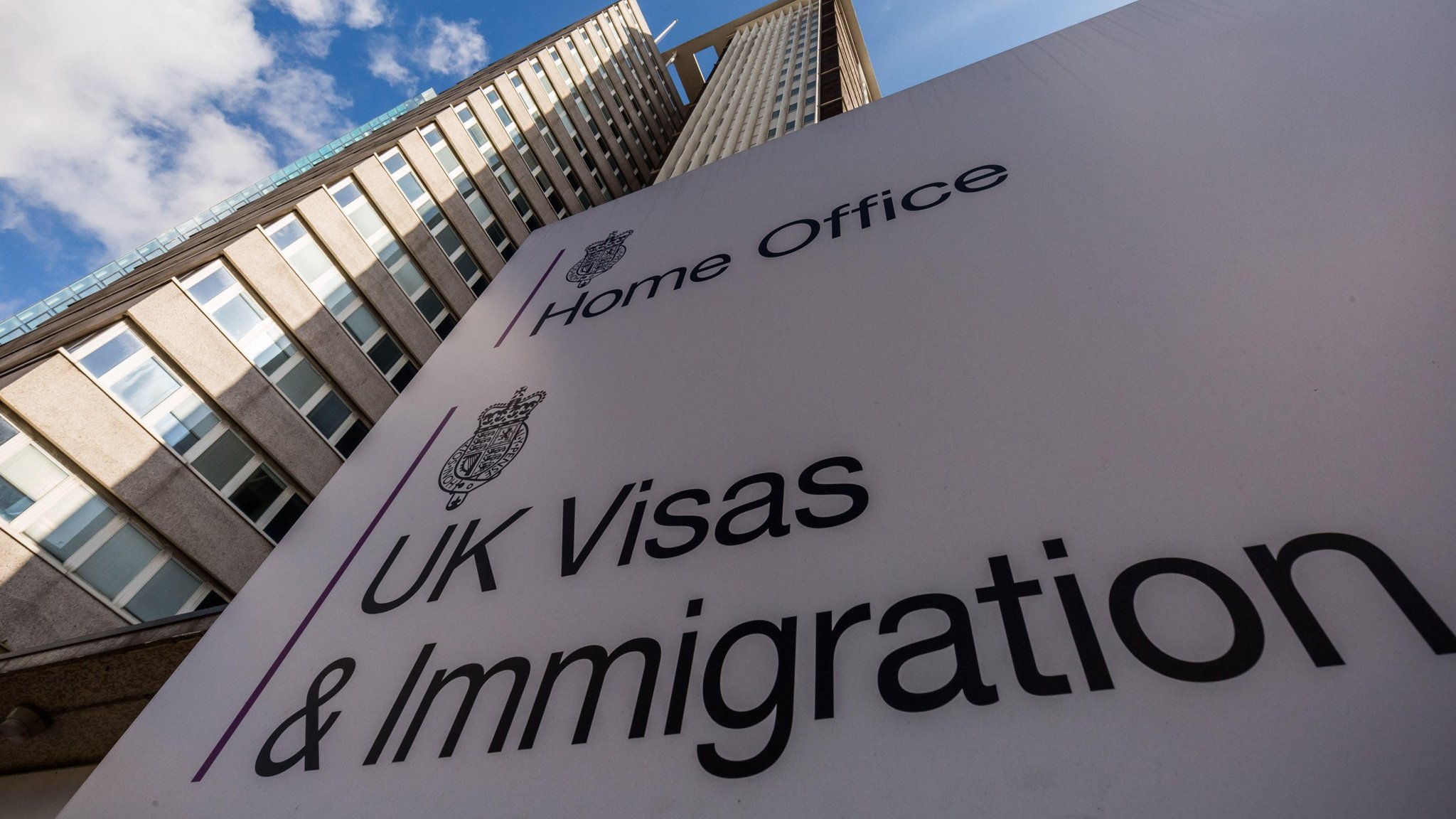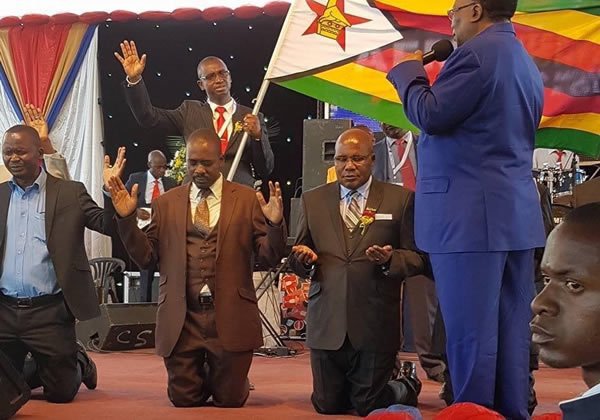Introduction
South Africa is the world’s most unequal society, if the measurement used is the Gini co-efficient. Its economy is also the biggest in Africa barring Nigeria’s. It arguably has the most advanced financial, industrial, and commercial sectors on the continent. As a consequence, and because of its peculiar history, it is home to Africa’s biggest and better-organized trade unions. For example, the National Union of Metalworkers of South Africa (NUMSA), has more than 370,000 paid-up members and well-oiled organizational machinery. South African civil society is also reputed to be particularly active and vocal and enjoys the democratic space to be so, compared with other countries in Africa. Together, these few observations about South Africa suggest the existence of an interesting and potent political situation, especially if we note that this country has just marked two decades of democracy following the political defeat of the apartheid régime. The question posed in this article is whether and how the working-class movement can find the strongest way forward, based on an assessment of the key political developments in the country.
Background
The demise of apartheid was effected by a negotiated deal whereby the forces of the anti-apartheid movement, with Nelson Mandela’s African National Congress (ANC) at the helm, agreed to leave economic ownership and control of the “commanding heights of the economy” (banks, mines, factories, and farms) in the hands of big capital. This was a retreat from the position espoused for decades in the Freedom Charter, a document guiding the ANC, and from an aspiration shared by other organizations that were part of the national liberation movement. Not only were the wealth, and the means of producing, left in the hands of “white monopoly capital,” but the ANC, once in power, proceeded to implement pro-big business neoliberal policies such as privatization, outsourcing, commodification of basic services, and relaxation of exchange controls. The result has been that the rich have gotten richer and the poor poorer, even as some of the ANC government’s policies have somewhat improved the lives of black people including those in the working class.
The global economic crisis has had disastrous consequences for the South African economy as a direct result of the ANC government’s removal of protectionist economic mechanisms that had existed under the apartheid regime; for example, more than a million jobs were lost, especially in the textile sector, when import controls were removed. The rand, the South African currency, has been victim of international financial volatility and has experienced several near crashes in the past two decades. There is a litany of examples of how South Africa, and in particular ordinary people and the working class, have paid a heavy economic price for the tighter neoliberal insertion of this country’s economy into the global economic order and the adoption of domestic neoliberal policies. In general, it can be argued that the legacy of apartheid oppression and capitalist exploitation has been slow to disappear in this country despite the ANC government’s commitment and mandate to wipe it out.
It is against this background, which I have only very sketchily mapped out, that key political developments in South Africa can and should be understood. Since about 2004, for example, there has been a steady increase in the number of community protests, when individual communities or settlements rise up in often disruptive protest (blocking roads, burning tires) demanding water, electricity, houses, and other services. The motivation is the sense that the ANC government of national liberation has been slow in “service delivery.” People are demanding a substantive content (“development”) to the democracy that they enjoy. There have also been a rise in strike action by workers, notably very large public sector strikes in 2007 and 2010, including what many commentators regard as a turning point in the development of the workers’ movement, namely the Marikana massacre. In 2012, workers employed by the Lonmin (formerly Lonrho) platinum-mining company went on strike; thirty-four of them were shot dead by the state police on August 16.
The “Spirit of Marikana”
and its Consequences
The deaths of the Marikana strikers sent shock waves throughout the world, especially among those who had been part of the international anti-apartheid movement. How could a government of national liberation kill its own people? The inspiration and hope that the struggle against apartheid had generated appeared to be smashed against the rocky mountain around which the massacre took place. In South Africa, most political parties, unions, and civil society organizations condemned the police action. The then biggest trade union in South Africa, the National Union of Mineworkers (NUM), closely aligned with the ANC (three of its general secretaries became secretary general of the ANC party) lost thousands of members to a new union because it had failed to support the strike. This new union, the Association of Mineworkers and Construction Union (AMCU), went on to lead the biggest and longest strike in the platinum sector in 2014. These strikes, in particular the massacre, introduced a new dynamic into the development of the workers’ movement in the country.
In December, 2013, NUMSA, the metalworkers’ union, resolved in its Special National Congress to pull out of the ANC-SACP-COSATU Alliance. This alliance between the ANC, the South African Communist Party, and the Congress of South African Trade Unions—the latter the biggest and most powerful union federation in the country—is the “historic bloc” that dominates mass politics in the country. It had succeeded in containing the mass dissatisfaction with ANC rule within the bounds of internal opposition. NUMSA resolved to withdraw its support for theANC in the national elections of 2014 and to begin the process of forming a workers’ party as an alternative to the ANC and the SACP. This was a significant development that many commentators called the “NUMSA moment,” with some directly linking it to the dynamics set off by the Marikana massacre. The sentiment was that a government that sent police to kill workers on strike could not be expected to implement “worker-friendly” policies. The NUMSA leadership was also highly critical of the ANC’s economic policies, especially its industrial strategy, whose effect it viewed as anti-worker and a recipe for deindustrialization.
NUMSA also resolved to form a united front that would unite labor and community struggles. This structure was inspired by the United Democratic Front (UDF), an anti-apartheid body formed in the 1980s, which contributed significantly to weakening the apartheid regime. But even as NUMSA was submitting its workers’ party and united front resolutions to its members at the Special National Congress, a new political party was being formed by Julius Malema, a former president of the ANC Youth League, who had been expelled for outspokenly demanding radical policies from the organization. This party, the Economic Freedom Fighters, was launched at the site of the massacre in Marikana, adopted red as its color, including the iconic red beret made famous by Thomas Sankara, the Burkina Faso revolutionary and head of state who was assassinated in October 1987. It surprised everyone in the 2014 elections by winning enough votes to become the second opposition party in the country. Its election manifesto centered around the demand for the nationalization of the “commanding heights of the economy” in line with the Freedom Charter, the document that the ANC claimed to be its guide for decades during the struggle against apartheid.
The Economic Freedom Fighters (EFF) have since dominated the political scene with their sharp radical rhetoric and merciless attack on ANC government policy, including engaging in dramatic antics in parliament—walkouts, scuffles with security—where their MPs wear red workers’ overalls and “maid servant” costumes to symbolize the party’s working-class orientation. In the last couple of years they have disrupted parliament a few times calling President Zuma and his deputy Cyril Ramaphosa (a billionaire whose company Shanduka has an 18% stake in Lonmin) murderers who ordered the shooting of workers in Marikana, and also demanding that Zuma pay back the money he allegedly stole when he used public money to renovate his homestead in Nkandla, a rural town in KwaZulu-Natal from where he hails. Zuma has surprised everybody by somersaulting in February, 2016, and agreeing to pay the money a few days before a constitutional court hearing which was considering whether the country’s Public Protector, Thuli Madonsela—who had ruled that Zuma pay back the money for renovations that had nothing to do with the security upgrades that government argues were being done—had the power to enforce her decisions.
This retreat by the President comes on the back of a damaging musical chairs fiasco that took place on December 9, 2015, when Zuma replaced the Finance Minister, Nhlanhla Nene, with an unknownMP, David van Rooyen, only to replace the latter two days later with the previous finance minister, Pravin Gordhan, after the rand took a pounding, losing the economy billions of rands. No plausible reason was given by Zuma for replacing Nene but speculation is that the President was unhappy with the manner in which Nene dealt with an allegedly close acquaintance of the President, Dudu Myeni; she is head of South African Airways, a state-owned airline that is constantly bailed out by the state and viewed as badly managed. This cry was taken up by a flash-in-the-pan movement calling itself #ZumaMustFall that organized marches in several city centers after the debacle. This movement was attacked for being dominated by whites and was associated by the ANC with the rise of racist remarks in the country. The EFF disrupted the last State of the Nation Address by the President on February 11 demanding both an explanation for the sacking of the finance minister and Zuma’s resignation because he is corrupt, unaccountable, and disrespectful of the country’s constitution. Another opposition party, the Congress of the People, also walked out of the proceedings on the same grounds. Zuma’s real nightmare might still come when the constitutional court makes its ruling in the next couple of months, because his offer to pay back the money did not persuade the Public Protector, the EFF, and the Democratic Alliance (the official opposition), or the joint plaintiffs, to withdraw their cases.
#RhodesMustFall, #FeesMustFall and #EndOutsourcing
If indeed there is a “Spirit of Marikana” wafting through South Africa then one of its consequences has been the birth of an amazing movement that has emerged in the country’s public universities. This is the Fees Must Fall and End Outsourcing campaigns that have mobilized thousands of students. This movement has shaken university administrators and the government and won both workers’ and students’ significant concessions from the authorities. It started as a campaign to remove the statue of Cecil John Rhodes, which stood in an imposing spot on lawns of the University of Cape Town (UCT), reputedly the best and richest university in Africa. Rhodes, arguably a symbol par excellence of the colonization of Africa—he was prime minister of the Cape Colony, provoked the Anglo-Boer War, amassed a vast and legendary fortune, had two countries named after himself (Southern and Northern Rhodesia, renamed Zimbabwe and Zambia)—had his statue become a sitting target for the pent-up rage and resentment against the legacies of colonialism, apartheid, and capitalism that gripped mainly black students and sections of society. Opposition to his statue became the detonator of a militant youthful movement that gripped South Africa twenty-one years after this country declared uhuru.
The movement began largely as an ideological rebellion and campaign demanding the decolonization of higher education, and ended up being the largest national mobilization of university students in the history of South Africa since the demise of apartheid. Rhodes’s statue could not withstand the winds of change and was removed on April 9, 2015. However, the Rhodes Must Fall campaign seamlessly transposed into the Fees Must Fall campaign that saw at least twenty of the country’s twenty-three universities joining the student uprising. Beginning mainly at the University of the Witwatersrand (Wits), a rich “liberal” university in Johannesburg, the movement was a response to the announcement of a 10% fee increase to be effected in 2016, when the universities opened in February for the new year. The authorities responded by a concession: fees would be reduced to 6%. Subsequently, many campuses erupted in protest, demanding a zero percent increase. At Wits the protest took the form of marches, including one to the ANCheadquarters, and blocking the main road around the city-based university. In other campuses various actions were taken, including class boycotts.
At UCT the students decided to march into Parliament, which is not far from the university. Apartheid-era scenes were the order of the day, as police used tear gas, rubber bullets, and arrests to quell the protests. Similar scenes, with perhaps even more police brutality, occurred in the “previously black” universities that tend to be less resourced than the “previously white” universities. It should be noted that in these universities, such as the Tshwane University of Technology, in Pretoria, and the Durban University of Technology, in Durban, the beginning of the academic year has regularly brought student protests around admissions, fees, and accommodations. The difference this time is that their more resourced cousins joined the movement. The movement coalesced nationally around a march to the Union Buildings, the seat of government in Pretoria, on October 23, 2015. Thousands of students gathered, demanding 0% fee increase, with many increasingly adding the demand for free education for all, that is, 0% fees. The student gathering gripped the nation’s imagination and the bigger television networks broadcasted the event live from start to finish, including showing harrowing scenes of police clashes with some very militant students among the large crowds that included sympathetic university lecturers and parents. President Zuma, who was inside the Union Buildings, did not come out as expected but after a long delay made a televised statement saying that there would be no increase in the fees in 2016. The students went home victorious.
An important aspect of the Fees Must Fall movement was the unity and solidarity between students and workers on the various campuses. A main demand adopted by the movement was to End Outsourcing, a reference to the exploitative practice whereby some university workers are employed through third parties in order to keep costs down for the university. This practice began in the early 2000s when the government started to distinguish between “core” and “non-core” functions with the latter, such as cleaning, security, and gardening, being outsourced to private companies. One of the first universities to do this was UCT under the leadership of Mamphela Ramphele, once a close comrade of Steve Biko, who then served as Vice-Chancellor (rector) of the institution. Many workers lost their jobs and others had their wages and benefits cut as they were transferred from the university payroll onto that of contract companies with less job security. The Fees Must Fall movement gave new impetus to this struggle with the students adding the demand to their list and the workers supporting the struggle for no fee increase. In some campuses workers went on strike, such as at the University of Johannesburg, where cleaners went on a three-week-long strike. Their strike was strongly supported by and sometimes even led by the students. They won a commitment by the university to end outsourcing by the year 2017, with R1,000 being added to their meager R2,800 monthly salary. Victimization, however, still continues, with one student leader, Claire Ceruti, still suspended by the university and unable to complete her Ph.D. studies. Other universities such as Wits and UCT made similar commitments and concessions. Those who did not, such as the University of Pretoria, the University of South Africa, and the Tshwane University of Technology, have had a rough time in early 2016, with strikes and protests by workers demanding the same.
The victory of the workers, more than that of the students, is significant. Outsourcing is arguably at the heart of neoliberal economic policy, where human labor is emphatically treated as a commodity whose cost must be kept as low as possible. During its implementation more than a decade ago there was a lot of resistance by workers, notably by the municipal workers, led by the South African Municipal Workers Union (SAMWU), a COSATU affiliate. However, the determination of the state to implement this policy and the failure of the union leadership to stick to their guns—arguably because they were too close to the ANCand their essentially reformist or class collaborationist political outlook—undermined the struggle and led to defeat. In universities, hospitals, schools, airports, and train stations, with housing, water, electricity, transport, education, and healthcare, the policy of outsourcing was implemented. At the heart of this policy is turning the public sector into a funnel for public money to be channeled into private pockets. The public sector becomes a source of profit for private business. And it is this policy that the workers fought against for more than a decade; today, the universities are on the verge of finally defeating it.
The reason behind the victory lies not simply in the workers getting the support of students, although this was key, but more fundamentally in the power of disruption. The students and the university workers shook the authorities by disrupting university processes. The strikes by workers and the protest action by students followed no laid-down procedure for striking or protesting. None of the strikers declared a dispute and obtained a strike certificate—they just struck. None of the students went to authorities seeking permission to hold a march or a public gathering as is required by the Public Gatherings Act here; they just marched, demonstrated, and blocked the roads. All the chains around the right to protest in the form of laws and regulations were ignored and broken. The strike certificate and the permission to march came from one place only: the strength of the mass mobilization itself. This is an important development in the unfolding resuscitation of a fighting workers’ movement, as I will argue below.
Reviving the NUMSA Moment Through Disruption and the “Spirit of Marikana”
In South Africa and everywhere else in the world we are living in an era of profound capitalist economic crisis. The capitalist class, directly and through state policy, has sought to pass the burden of the crisis onto the working class and the poor, and often succeeded. One way is through austerity measures involving cutting back on the social wage and pushing down the actual wage. However, the working class has not sat back in the face of attacks on its living standards, its access to basic services, and other problems emanating from the crisis. This is symbolized by the notion of a “Spirit of Marikana” in South Africa. When thirty-four miners lay dead, shot dead by the police because they were demanding a living wage, their comrades did not end the strike. The strike went on for another three weeks, winning as much as 28% increase for some categories of workers. It is the same Lonmin workers who joined the workers of Anglo-American Platinum (Amplats) and Impala Platinum (Implats) in the 2014 strike demanding a R12,500wage. The “Spirit of Marikana” drove this strike forward despite all the obstacles, hardships, and attacks that the bosses and their government threw at them. The miners actually said that they would be betraying the spirit of the dead miners if they retreated from the demand that they died for. Their strike was infused by a defiant spirit, the spirit of do-or-die. One of the placards carried by the striking workers read: “If you can’t pay R12,500 take your mine and go back to Europe with it.’ In other words, it was better that the mines be closed than to continue being exploited by the mine owners as they were. The miners did not buy the story that they were “lucky” to have a job and that, compared to other workers, they were better paid. They wanted something better. They wanted an end to exploitation and oppression. They could not continue the old way. That is the “Spirit of Marikana.”
It is, however, true that despite many communities coming out in protest demanding “service delivery,” with some commentators stating that South Africa leads the world in the rate of protest per capita; despite at least five new settlements and communities established by way of land invasions and house occupations naming themselves “Marikana,” the protest movement remains fragmented. It is as if there is a lot of political turmoil but no center of authority. Arguably, the 2007 and 2010 public sector strikes, because of their size and power, momentarily provided a center for the working class in struggle as millions of workers looked to the strikes to show the way forward for the class. Again, when the Marikana massacre occurred, followed by the platinum-wide strike in 2014, these workers assumed the role of a kind of vanguard of the workers’ movement. However, in all instances no significant solidarity was provided by other employed or unemployed workers. Whatever solidarity existed was small or “invisible,” that is, felt but not acted upon. The NUMSA moment gave hope to many because the union leadership clearly stated its intention of uniting struggles and leading the struggle to form a working-class party. But in practice a lot of ground has been lost; for example, none of the COSATU unions have broken away from the Alliance to follow in NUMSA’s footsteps. Instead NUMSA was expelled from COSATU and the general secretary of the union federation, Zwelinzima Vavi, was also expelled for opposing this undemocratic action. There are nine unions affiliated to COSATU that have pledged solidarity with Vavi and NUMSA, but so far practical fruits of this sympathy haves not been seen. Many commentators view the NUMSA moment as fading, as a lost moment.
It is also important to look soberly at the successes of the Fees Must Fall and End Outsourcing campaigns, shining a light on the (potential) weaknesses. Behind the movement, as illustrated by the Rhodes Must Fall campaign, is an anger at the way things are: at the legacy of colonialism, apartheid, and patriarchy that remains a dominant feature of everyday life in South Africa and elsewhere in the world. The power of the call for decolonization is that it is a rejection of everything, a cry that everything is wrong: the education system, the job situation, the racism, the sexism, the poverty—everything is wrong, everything must change. This is the sentiment driving the leading segments of the student movement and indeed the workers’ movement in the universities. The rejection is important because it lays the seeds of a vision for an alternative society. The students might not be able to say what they want but they do know what they don’t want, they know what must change, and many know that for it to change the whole system has to change.
The movement has been characterized by a strong Black Consciousness and Pan Africanist ideological component. Indeed the movement has rescued these ideologies from the history books and made them immediately relevant for living struggle. However, this does not mean that the blind spots in these ideologies will be automatically removed. Already there is evidence of identity essentialism whereby white activists are, for example, barred from attending Rhodes Must Fall meetings at UCT on the grounds that they cannot understand black pain and that they are all beneficiaries of “white privilege” and as such ought to be excluded from the movement.
The idea of decolonization is open to various interpretations. Often there is an emphasis on anti-Eurocentrism, that is, the rejection of the imposition of ideas from Western Europe on Africa and other Third World countries. This ideological focus can be accompanied by the political-economic observation that Europe colonized Africa and as such developed at the latter’s expense. I would argue that this formulation, unless strongly qualified by class analysis, is likely to provoke a response based on nationalism. The current decolonization movement as espoused by the Rhodes Must Fall campaign, and to a lesser extent by the Fees Must Fall and End Outsourcing campaigns, including the politics of the EFF, should not be allowed to fall into that trap, as this would be a repeat of the cul-de-sac that the national liberation movement found itself in after winning its independence. Kwame Nkrumah warned against “neo-colonialism” and we are still fighting against it today. Frantz Fanon warned against “false decolonization” and this is exactly what the current decolonization movement is struggling against. Some elements in the decolonization movement will no doubt deservedly make careers out of the opening up of the Eurocentric universities to African writers, literature, and alternative perspectives. However, we should not overlook the fact that the university system is a manufacturer of elitism and class privilege. This suggests that the struggle for free education at university level should also be a struggle for free education at all levels of the education system. The demand for free education from crèche to university is a good one. More importantly, albeit more challenging, is the realization that the university reflects the social relations in which it is embedded and we should not lose sight of the fact that it is society itself and all its aspects that must change for fundamental change to happen.
The student movement can only move forward the way it started: by linking up with the workers’ movement; by making its demands workers’ demands and vice versa. One of the cries of the students is against “financial exclusion,” that is, against the way that poor students, having no money to pay user fees, get kicked out of university. The issue of financial exclusion faces workers, working-class youth, working-class pensioners, and the working-class unemployed every day and all day: exclusion from housing, water, electricity, nutritious food, decent healthcare—because you can get none of these things unless you can pay. It can thus be argued that the future of students’ struggles will actually come to depend on the extent to which it connects with, becomes part of, and itself shows solidarity and support for these other struggles. When we bring this observation together with the flagging NUMSA moment we find some reasons for hope. At the momentNUMSA is intent on leading the struggle to form a new union federation, which might happen before the end of the year. This is all very well as long as the new federation continues to orient towards workers in COSATU, the old federation, and find ways of connecting with them, bridging the gap, and winning them over to the politics of independent working-class action. That politics and action were exemplified in the manner in which the university students and workers disrupted the operation of the universities without asking permission. NUMSA must learn from this. It is the politics of disruption, inspired by the “Spirit of Marikana,” that is reviving the NUMSA moment practically on the ground for the whole working class, and it is upon this firm grounding that the working-class movement can revive itself and find the strongest way forward in South Africa and elsewhere in the world.









